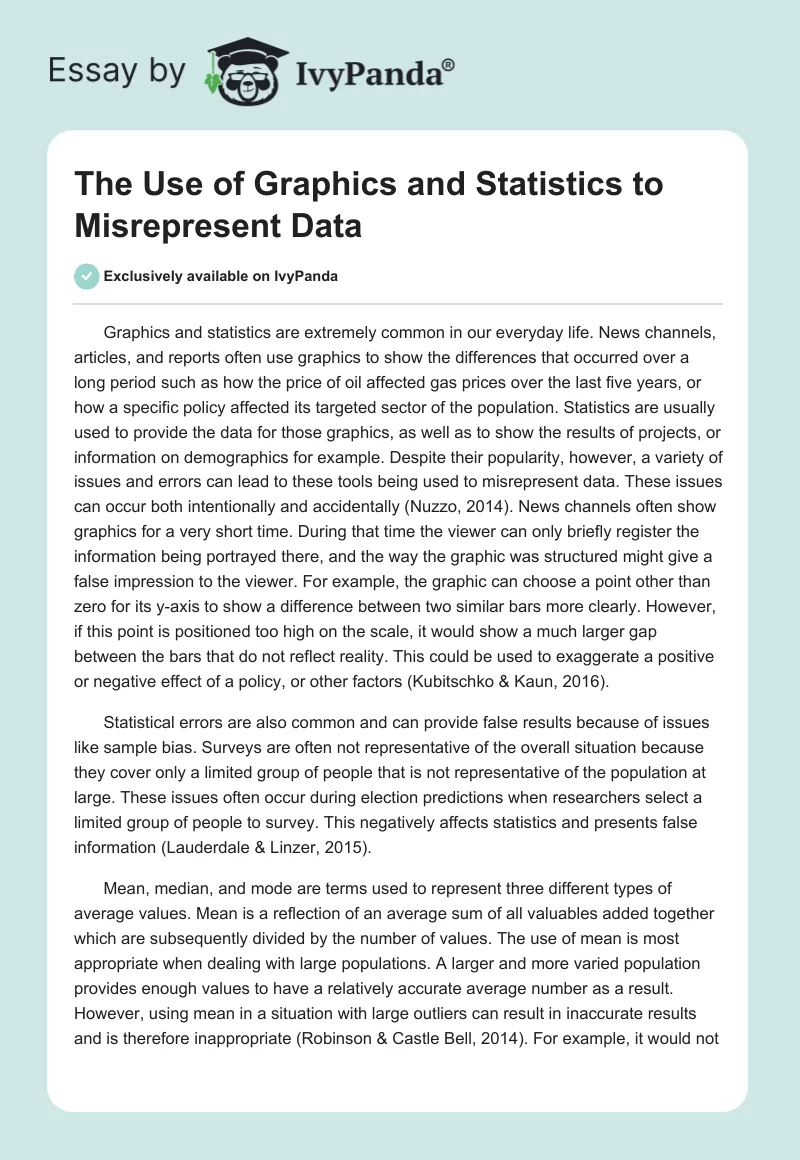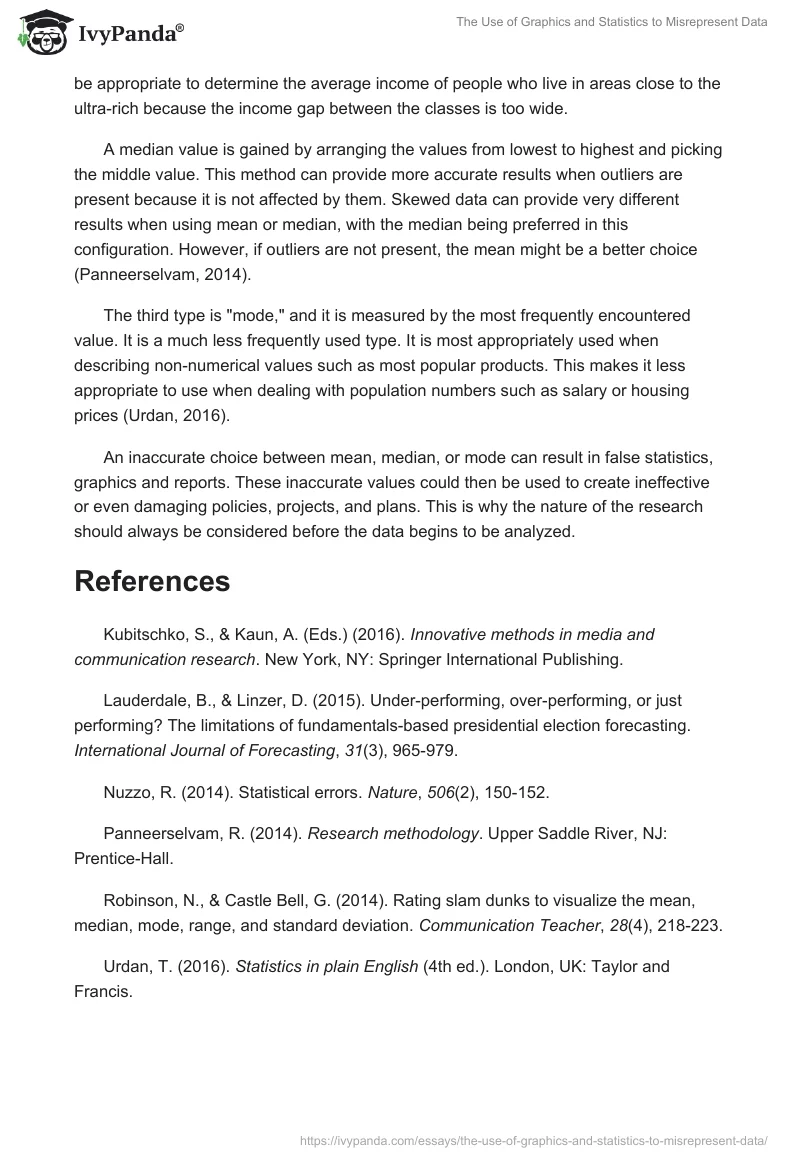Graphics and statistics are extremely common in our everyday life. News channels, articles, and reports often use graphics to show the differences that occurred over a long period such as how the price of oil affected gas prices over the last five years, or how a specific policy affected its targeted sector of the population. Statistics are usually used to provide the data for those graphics, as well as to show the results of projects, or information on demographics for example. Despite their popularity, however, a variety of issues and errors can lead to these tools being used to misrepresent data. These issues can occur both intentionally and accidentally (Nuzzo, 2014). News channels often show graphics for a very short time. During that time the viewer can only briefly register the information being portrayed there, and the way the graphic was structured might give a false impression to the viewer. For example, the graphic can choose a point other than zero for its y-axis to show a difference between two similar bars more clearly. However, if this point is positioned too high on the scale, it would show a much larger gap between the bars that do not reflect reality. This could be used to exaggerate a positive or negative effect of a policy, or other factors (Kubitschko & Kaun, 2016).
Statistical errors are also common and can provide false results because of issues like sample bias. Surveys are often not representative of the overall situation because they cover only a limited group of people that is not representative of the population at large. These issues often occur during election predictions when researchers select a limited group of people to survey. This negatively affects statistics and presents false information (Lauderdale & Linzer, 2015).
Mean, median, and mode are terms used to represent three different types of average values. Mean is a reflection of an average sum of all valuables added together which are subsequently divided by the number of values. The use of mean is most appropriate when dealing with large populations. A larger and more varied population provides enough values to have a relatively accurate average number as a result. However, using mean in a situation with large outliers can result in inaccurate results and is therefore inappropriate (Robinson & Castle Bell, 2014). For example, it would not be appropriate to determine the average income of people who live in areas close to the ultra-rich because the income gap between the classes is too wide.
A median value is gained by arranging the values from lowest to highest and picking the middle value. This method can provide more accurate results when outliers are present because it is not affected by them. Skewed data can provide very different results when using mean or median, with the median being preferred in this configuration. However, if outliers are not present, the mean might be a better choice (Panneerselvam, 2014).
The third type is “mode,” and it is measured by the most frequently encountered value. It is a much less frequently used type. It is most appropriately used when describing non-numerical values such as most popular products. This makes it less appropriate to use when dealing with population numbers such as salary or housing prices (Urdan, 2016).
An inaccurate choice between mean, median, or mode can result in false statistics, graphics and reports. These inaccurate values could then be used to create ineffective or even damaging policies, projects, and plans. This is why the nature of the research should always be considered before the data begins to be analyzed.
References
Kubitschko, S., & Kaun, A. (Eds.) (2016). Innovative methods in media and communication research. New York, NY: Springer International Publishing.
Lauderdale, B., & Linzer, D. (2015). Under-performing, over-performing, or just performing? The limitations of fundamentals-based presidential election forecasting. International Journal of Forecasting, 31(3), 965-979.
Nuzzo, R. (2014). Statistical errors. Nature, 506(2), 150-152.
Panneerselvam, R. (2014). Research methodology. Upper Saddle River, NJ: Prentice-Hall.
Robinson, N., & Castle Bell, G. (2014). Rating slam dunks to visualize the mean, median, mode, range, and standard deviation. Communication Teacher, 28(4), 218-223.
Urdan, T. (2016). Statistics in plain English (4th ed.). London, UK: Taylor and Francis.


